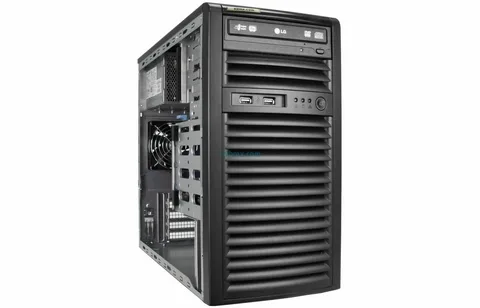When building a reliable and high-performing IT infrastructure, tower servers are often the cornerstone of many organizations' computing environments. Unlike rack servers, which are designed for compact stacking, tower servers are standalone units that resemble desktop computers. This makes them ideal for smaller offices, remote locations, or any setting where scalability and flexibility are key. In this blog, we'll explore the essential hardware components of tower servers and discuss their functions in detail.
1. Chassis
The chassis is the outer shell of the tower server, providing a sturdy frame that houses all other components. Tower server chassis are typically larger than desktop cases, offering more internal space for additional components, like hard drives, expansion cards, and cooling systems. This extra room allows for easier hardware upgrades and improved airflow.
2. Motherboard
The motherboard is the main circuit board in the server, connecting all hardware components and allowing them to communicate. It contains sockets for the CPU, RAM, and other expansion cards. Tower server motherboards often have more expansion slots and support for a wider range of components compared to consumer-grade motherboards, providing greater flexibility for future upgrades.
3. Central Processing Unit (CPU)
The CPU, often called the "brain" of the server, performs calculations and processes instructions. In tower servers, CPUs can range from single-core to multi-core processors, depending on the server's purpose. Servers designed for heavy workloads might use multiple CPUs to increase processing power. Intel Xeon and AMD EPYC are common choices for server-grade CPUs due to their reliability and performance.
4. Random Access Memory (RAM)
RAM is the server's temporary storage, allowing it to quickly access data and instructions. Tower servers typically have more RAM slots than desktop computers, enabling them to handle large amounts of memory. This is crucial for multitasking and running resource-intensive applications. ECC (Error-Correcting Code) RAM is commonly used in servers to ensure data integrity.
5. Storage
Tower servers often have multiple storage options, including hard disk drives (HDDs) and solid-state drives (SSDs). HDDs provide high storage capacity at a lower cost, while SSDs offer faster data access and increased reliability. Some tower servers support RAID (Redundant Array of Independent Disks) configurations, allowing for data redundancy and improved performance.
6. Power Supply Unit (PSU)
The PSU provides power to all server components. Tower server PSUs are generally more robust than desktop PSUs, as they must support higher power demands. Redundant power supplies are common in tower servers, providing a backup in case one unit fails, ensuring continuous operation.
7. Cooling System
Given the high-performance components inside a tower server, efficient cooling is essential to prevent overheating. Tower servers often use larger fans and improved airflow designs to keep components cool. Some servers also support liquid cooling for even better temperature control.
8. Expansion Slots
Expansion slots allow you to add additional hardware to the server, such as network cards, graphics cards, or additional storage controllers. Tower servers typically offer a variety of expansion slots, including PCIe (Peripheral Component Interconnect Express), allowing for significant customization and future upgrades.
9. Network Connectivity
Network connectivity is a critical aspect of any server. Tower servers often come with multiple network interfaces, allowing for high-speed connections and redundancy. This is essential for environments where network uptime and performance are paramount.
Conclusion
Tower servers are versatile and powerful systems that can adapt to a variety of business needs. By understanding the key hardware components and their functions, you can make informed decisions when choosing or upgrading a tower server for your organization. Whether you're building a small office server or a complex data processing center, these components form the backbone of your IT infrastructure.


No comments yet